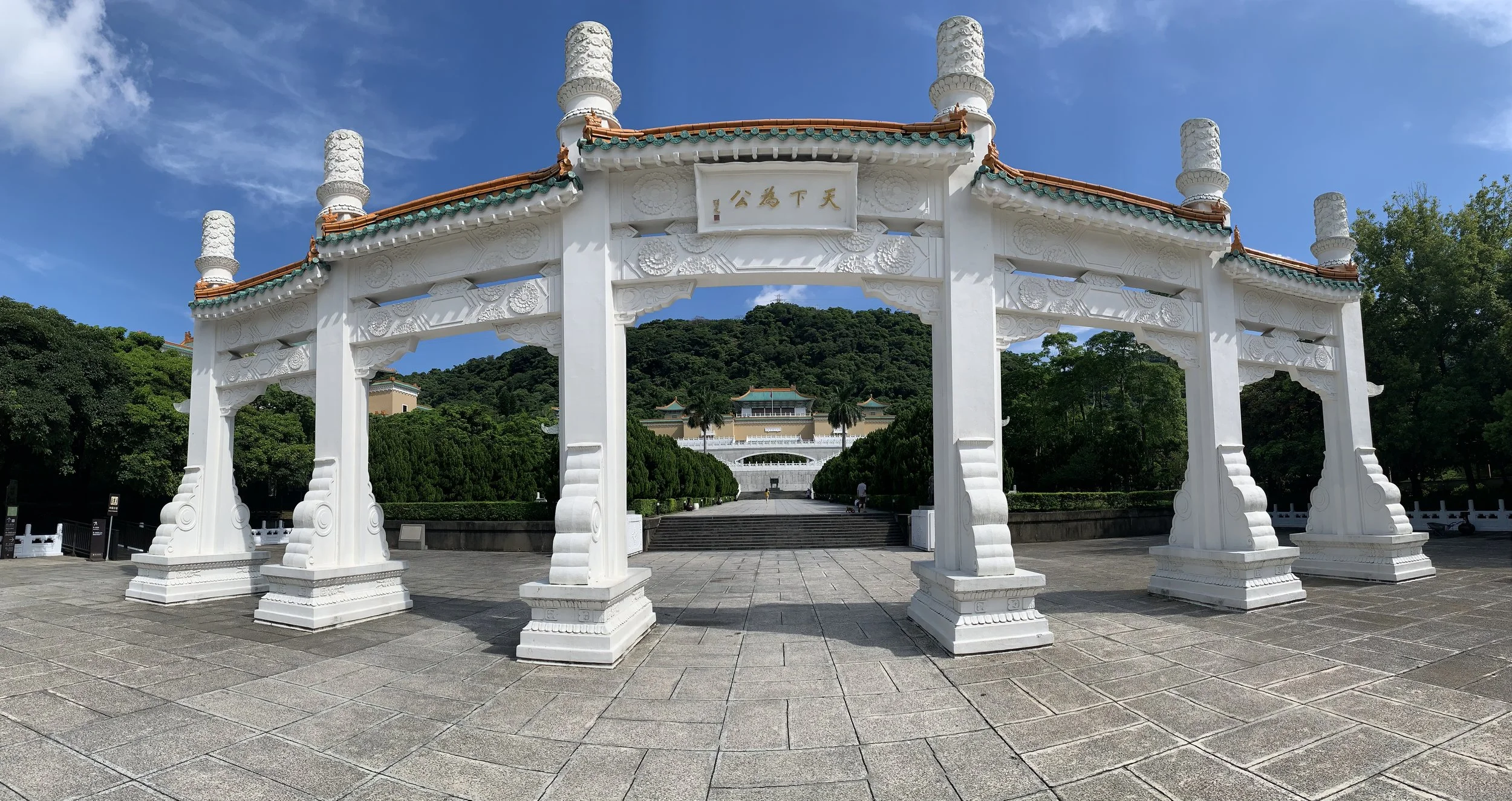The most prominent historical landmark in Taiwan, the CKS Memorial Hall was erected in honor and memory of Generalissimo Chiang Kai-shek, the former President of the Republic of China, and was opened in 1980 as part of a national park and gathering area. The characters behind Chiang's statue read "Ethics", "Democracy", and "Science", and the inscriptions on the side read "The purpose of life is to improve the general life of humanity" and "The meaning of life is to create and sustain subsequent lives in the universe".
The name of the square is officially Liberty Square (自由廣場), as seen above the front gate, however the name change was politically motivated and most people in practice still refer to the entire complex as CKS Memorial Hall.
The name of the square is officially Liberty Square (自由廣場), as seen above the front gate, however the name change was politically motivated and most people in practice still refer to the entire complex as CKS Memorial Hall.
The octagon-shaped white building rises 76 meters and is covered with blue tiles and red accents, echoing the flag of the Republic of China. The eight sides represent the Chinese cultural symbolism of the number eight which is traditionally associated with fortune and wealth. The two sets of 89 steps represent Chiang's age of death and lead up to main hall housing a large bronze statue of Chiang protected by military personnel which change hourly.
National Concert Hall
Originally constructed in 1742 as a wooden shrine, the Bao'an Temple is a Taiwanese folk religion temple. Throughout Taiwan's history, the temple was renovated and reconstructed numerous times, leading to a 2003 induction into UNESCO for cultural heritage conservation.
Dedicated to the Taoist saint Baosheng Dadi (保生大帝), the 900 SQ METRE large temple faces south, in line with Feng-Shui practices, and houses the front, main, and rear halls, along with the east and west halls. The buildings also run from tallest to shortest in that order, in observance of Confucian principles. The temple also houses a drum tower.
Important architectural elements around the temple grounds include stone carvings, stone lions, dragon columns, stone bamboo windows, and wood, stone, and clay carvings.
The Confucius Temple
The Confucius Temple


























































